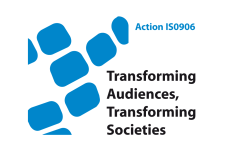- About the Action
- Events
- PhD workshop - Ljubljana 2014
- Action Open Conference - Ljubljana 2014
- New Media and Participation conference - Istanbul 2013
- Belgrade meeting 2013
- Media literacy research and policy - Brussels 2013
- ICA Pre-Conference 2013
- Tampere meeting 2013
- Budapest workshop 2012
- Milan meeting 2012
- Brussels PhD workshop 2012
- Brussels Action workshop 2012
- London meeting 2011
- Zagreb Conference 2011
- Lisbon meeting 2010
- Affiliated events
- WG 1
- WG 2
- WG 3
- WG 4
- Cross-WG
- Output
Why and how should we measure digital media literacy?
Courtois, C., Vanwynsberghe, H., Paulussen, S.,& Verdegem, P. , (2011). Why and how should we measure digital media literacy? . Zagreb conference: "New challenges and methodological innovations in European media audience research". 7-9 April 2011.
Abstract: Although not a new concept in academic literature, media literacy is recently gaining increased attention from scholars and policymakers. Technological developments and social evolutions cause profound changes in the way people use the media. At the heart of these accounts, however, is the idea that users need to critically understand the depth and implications of an emerging digital media ecology. This explains the revived attention for the relatively ‘old’ topic of media literacy (Livingstone S., 2004). This paper focuses on conceptual and methodological challenges of measuring digital media literacy. A thorough understanding of the notion of media literacy, including techniques to measure the level of literacy of individual users, is a crucial part of policymaking in the evolving digital media environment. As empowerment and participation in the convergence culture is increasingly shaped by social and personal competences of individuals (MacKenzie & Wajcman, 1999), research activities focusing on both a conceptual and a methodological (empirical) level are needed to support policy measures on this matter. Therefore, this paper presents a conceptual framework for measuring and monitoring the conditions for an optimal use of social media in a digital environment. Based on this framework, the next step will be to develop indicators and methods for measuring digital media literacy. The proposed measurement instrument will be applied to gather empirical data about young people and employees. On the basis of the results from these theoretical, methodological and empirical efforts, we aim to formulate future policy recommendations concerning media literacy in a digital environment.

